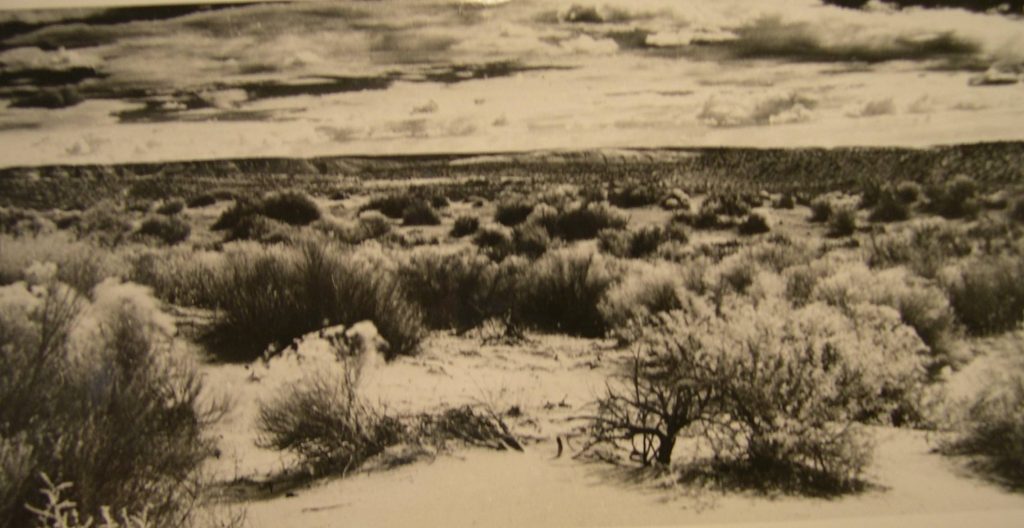[Interviewed by Robert W. Mull, from S.L. Sanger’s Working on the Bomb: An Oral History of WWII Hanford, Portland State University, 1995]
The sight of military vehicles cruising through the valley started the talk. Upriver, a large parcel of land had been acquired for an artillery range and down at Pasco there was a Naval Air Station. But, the backroads connecting the orchards and tiny villages in between had never been thoroughfares for anything in the war effort. Nearby newspapers caught on to the story, but it didn’t seem to rate the space that news from the front did.
They called in the Federal Land Bank appraisers to appraise the project. I was asked to stay as an adviser. The Federal Land Bank had had a very poor experience in the Priest Rapids Valley because they had made loans to soldier-farmers after World War I who failed in their loans. They had the attitude that the Priest Rapids was not a successful farming area, so when they made the appraisals, the appraisals were very low.
Well, then it was a matter of negotiating with the property owners for the acquisition of the land. The negotiators for the Corps of Engineers had offices in Prosser. They had great difficulty in negotiating for the acquisition of any of the land because of the very low appraisals. Much of it went into litigation. And because this was a very serious and important project, the U.S. Attorney in Oregon who had been handling many condemnation matters was brought to Yakima.
Now at that time, since I was under Civil Service and could no longer handle the acquisition, I resigned from the Corps of Engineers. After I resigned and after this negotiation was going on for the tracts, many property owners came to me and wanted me to help them in their sale to the government. I did join with them and I appraised much of their property and I appeared against the government and for the farmers who went to court.
We were quite successful and the U.S. Attorney was quite aware of the fact the prices were too low and the federal government finally reviewed the matter and asked that the old appraisals be thrown out and to reappraise all of the remaining tracts at the Hanford Project. I was employed to do that. I reappraised the Hanford tracts and we settled almost all of the claims.




